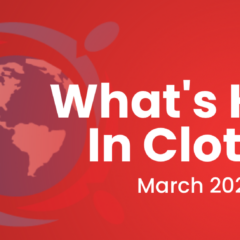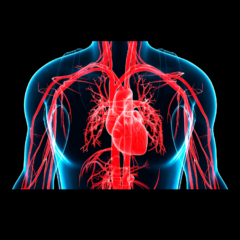Last updated on
Clot Chronicles: Travel-Related VTE
Hello, my name is Teresa Carman. I’m the Director of Vascular Medicine at University Hospitals Cleveland Medical Center. Today on Clot Chronicles, I’m going to cover the topic of travel-related deep vein thrombosis (DVT).
As you’re well aware, Virchow’s triad talks about stasis, hypercoagulability, and endothelial injury as the inciting etiology for most DVT. Patients who are undergoing air travel or car travel have, essentially, two of these three factors involved in the potential for forming a DVT. First, when you travel, there’s a substantial amount of stasis, and that’s one etiology. During air travel, hypoxia as well as relative dehydration may contribute to hypercoagulability and the formation of DVT.
While DVT associated with travel is relatively uncommon—occurring in about 2.8 people per 1,000 travelers—it is still a relative source of morbidity for these individuals. Most of these DVTs will be distal and many asymptomatic, although proximal DVT, pulmonary embolism (PE), and even fatal PE is known to occur.
In addition to the hypoxia, relative stasis, and dehydration, there are many patient-related factors that contribute to the formation of venous thromboembolism. Biometric factors—such as advancing age, obesity, or being overweight—are patient-related factors that may contribute.
In addition, comorbid conditions such as a recent surgery, cancer, or undergoing chemotherapy, underlying thrombophilia, or recent trauma or injury are also known risks. There are other associations, such as being of short stature or very tall stature, which will contribute to risk in these patients. It’s identified that these patients are not only part of the economy class—hence the moniker economy class syndrome—but even patients in business class and first class are at risk.
Patients seated in a window seat seem to be at higher risk than patients seated in an aisle seat. Other flight factors that may be associated include longer flights (most flights over six hours). For every two hours of additional flight time, the risk increases. Patients who take sleep aids or use devices to help assist with sleep and limit their mobility are also at higher risk.
Things that we should advise patients to do to help with their underlying risk include foot and ankle exercises with dorsiflexion and plantar flexion, and small circular motions. Patients should be advised to get up and walk around every two hours, as long as it’s safe to do so, and keeping themselves hydrated and avoiding caffeine and alcoholic beverages also plays a role.
Patients who are low risk (have one or more risk factors for VTE), should just be advised to use mechanical measures such as foot and ankle exercises, walking, and avoiding dehydration. Patients who are at intermediate risk for VTE (who have two of those risk factors) should be advised to further wear graded elastic compression stockings – usually a 15- to 20-mmHg stocking is advised.
Patients who are at the highest risk (who have multiple comorbid risk factors) may be considered for low-molecular-weight heparin (LMWH) or even direct oral anticoagulant (DOAC) therapy when they travel. It’s important to recognize that the American College of Chest Physicians does not necessarily advise pharmacologic prophylaxis but does advise that all patients should be individually risk stratified for the use of pharmacologic therapy. Other guidelines do suggest that pharmacologic prophylaxis may be helpful. In any case, the use of LMWH or a DOAC is certainly off-label; there are no good studies that outline the use of these agents in this setting.
So, in conclusion, air travel—and even car travel—pose a risk of VTE for your patients. Multiple patient-related and travel-related factors may be involved. Patients should be advised to use mechanical measures, such as frequent ambulation, doing foot and ankle exercises, and avoiding dehydration. Individually risk stratifying patients for the use of graded elastic compression and pharmacologic therapy should be employed.
Thank you for joining me for this session of Clot Chronicles.



